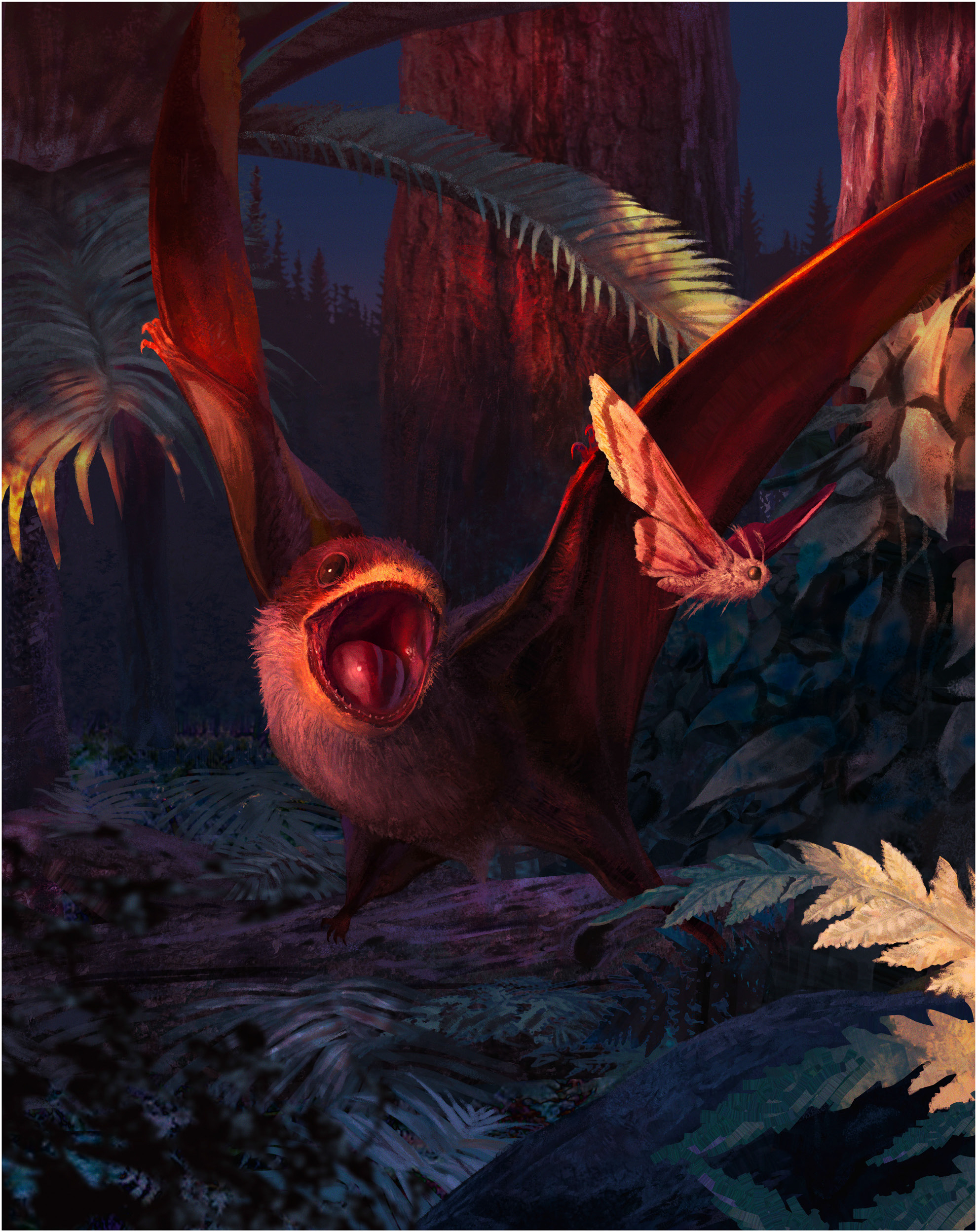
Yes, it’s very early in the year but before 2023 had even hit, this paper managed to squeeze out actually appearing online on New Year’s Eve when I, and indeed most of the world, were not keeping tabs on journals so it rather passed everyone by and I’m now rushing to catch up! The good news is that it’s more anurognathid pterosaurs (arguably the best pterosaurs and certainly the cutest). These odd little animals have had a lot of attention in recent years with a bunch of new finds (some of which include new taxa like Cascocauda) and are just generally an increasingly well-studied clade given how many seem to preserve soft tissues which is rather nice.
For as long as I think anyone remembers, the anurognathids have been considered to be aerial insectivores, flying around at night and trying to catch insects on the wing. I don’t think there are any papers that have seriously challenged this hypothesis, and it’s been the default for decades given that their basic body plan and head shape means they have a massive gape, huge eyes, small teeth and wings well suited to this kind of flight. But it’s also an idea that hasn’t really been tested in any real way, relying on some basic (but perfectly reasonably) comparisons to things like whip-poor-wills and other similar birds.
So the central point of this paper was to try and do some more formal comparisons and see just how the anurognathids fare in comparison. I must confess I didn’t contribute massively to this paper, the lead author Alex Clark, who is based in Cincinnati, contacted me last year with the idea for the paper and really needed help with the pterosaur bit. He’s wrapping up his Masters on bird ecology and thought that it would be a good idea to do some formal comparisons on head shape in various insect-catching birds and those that operate in low light to the anurognathids to see how they overlapped. We also put in some comparisons to some insectivorous bats in terms of their canine shape and the similarly shaped teeth in the pterosaurs.
The details are of course in the paper but the really short version is this. Anurognathid heads shapes in terms of their gape is really similar to that of other birds that catch insects on the wing (like swallows and nightjars) and not like that of other pterosaurs. Their eyes are huge and again are like those of nocturnal, or low-light operating birds (in fact they are generally proportionally even larger). In short, this really strongly supports the conventional interpretations of anurognathid ecology. The tooth comparisons to bats were rather less helpful and the data is very scattered, and it’s at least not contradictory to the general idea.
No, on the one hand, no real surprises here. Our fundamental ideas were solid and the previous comparisons were reasonable, meaningful and turned out to be well-supported. Still, it’s really nice that this does back things up and that our basic inferences about anurognathids were correct and it means that those almost infinite drawings of the spiraling around after insects in the dark are not out of date. On that note, the paper does include some lovely new art of that very action with a new piece by Rudolf Himawan shown here.
I’d like to add a final quick thanks to Chris Bennett for generously letting us reuse some of his drawings to make our own figures clearer and to Manabu Sakamoto who gave us some useful pointers on some of the analyses. Mostly though, I need to thank Alex for inviting me to work with him on this project in the first place and seeing this paper through to the end.

Recent Comments